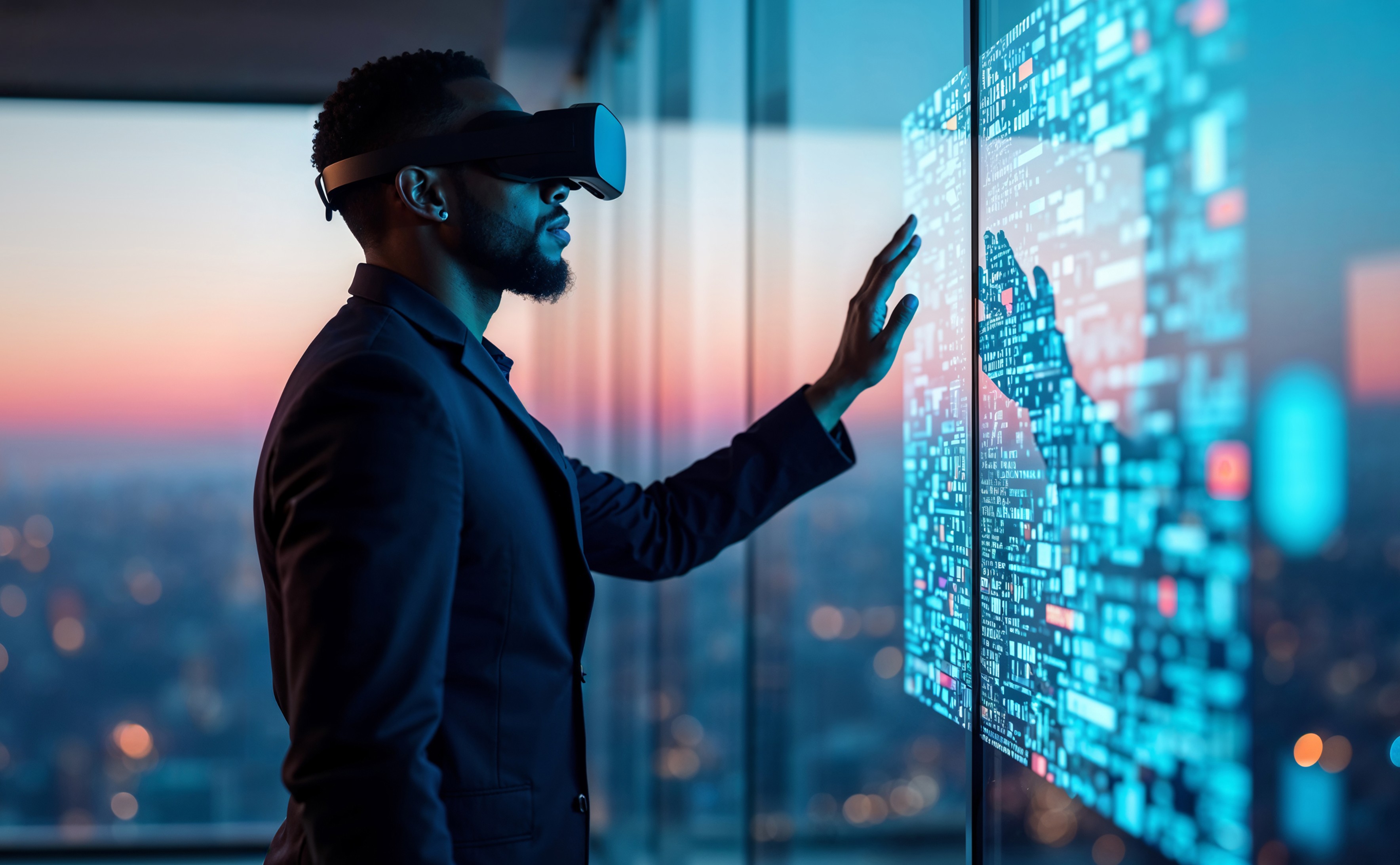Laravel Vs. CodeIgniter: Which Framework Is Better?

Using a PHP framework is more like hiring a construction company. It offers a clear blueprint and pre-made components, just as a construction company provides ready-made materials and designs. By managing repetitive tasks, the PHP framework saves time — for instance, security setup, connecting to a database, etc., more like skilled workers manage plumbing and electrical work.
79% of all websites use PHP to some degree, marking its dominance on the web. Developers organise and package the most used PHP functions, called PHP frameworks in the bundled form, making PHP highly flexible. The framework’s structure ensures the project is built securely and efficiently, just like how a project manager monitors the construction to ensure a house is safe and sturdy.
Being pre-built toolkits, PHP frameworks streamline web development. Laravel and CodeIgniter are two of the most in-demand PHP frameworks. When you want to pick the right PHP framework for website development, both are prevalent as the PHP powerhouse. Is your business better suited for the elegant and modern features of Laravel or the simplicity and lightweight nature of CodeIgniter?
Which framework among Laravel Vs. CodeIgniter do you think is the best choice? This article can answer the question by discussing each framework’s key features, architecture, and uses in detail.
An Overview of Laravel and CodeIgniter
While CodeIgniter is well-known for its simplicity and speed, Laravel is feature-rich and robust. Both have passionate communities and versatile features, but they serve slightly varying development styles. So which framework would you go for to develop your next project? Let’s first dive into the overview and then learn the difference between Laravel and Codeigniter.
What is Laravel Framework?
Laravel is a well-known and powerful open-source PHP framework. This framework offers an extensive range of tools and libraries that make web application development hassle-free. Laravel has an intuitive syntax that makes database querying, routing, and authentication more direct, which improves overall developer productivity.
It also incorporates features such as eloquent ORM (Object-Relational-Mapping), a huge set of built-in security features, and a blade templating engine, which cater to the security and efficiency of the framework. Laravel has a dedicated community that ensures security patches, regular updates, bug fixes, comprehensive documentation, and a vast ecosystem of packages. It is undoubtedly an ideal choice to build scalable, secure, and modern web applications.
Key Features of Laravel:
1. MVC Architecture
It follows an MVC (Model View Controller) pattern to make the code maintainable and clean. It separates the logic among Model, View, and Controller.
2. Eloquent ORM
It provides a reliable Object Relational Mapping (ORM) that makes database interactions effortless. Hence you can interact with databases with PHP syntax other than standard SQL queries.
3. Blade Templating Engine
Blade Templating Engine provides a concise and creative way to build application views. These are easy to read, maintain, and promote clean code.
4. Artisan CLI
Artisan CLI (Command Line Interface) automates repetitive tasks — ranging from Laravel database migrations, to code generation, etc. It lets developers synchronise the database schema and maintain seeding databases in Laravel for testing.
5. Security Features
Laravel offers high-end security by providing built-in features to secure your website against potential web attacks. These encompass protection against threats like SQL injection attacks, cross-site scripting (XSS) vulnerabilities, etc.
6. Pre-Built Functionalities
With Laravel, you can experience a huge set of built-in features that can ease development. It supports Laravel authorisation, authentication, caching, etc, for seamless development.
7. Task Scheduling and Job Processing
Task scheduling and job processing mechanisms of Laravel make it integral for background task management and automation of recurring jobs.
8. Dependency Injection and Service Container
Laravel manages class dependencies with a robust service container. The feature promotes using dependency injection and inversion of control that makes code highly testable, modular, and easy to maintain.
9. Community and Documentation
It houses an active and vibrant community of developers. The tutorials, documentation, and readily available packages make it easier to gain solutions to challenges and understand the best practices.
What is the CodeIgniter Framework?
CodeIgniter is a lightweight PHP framework offering high-speed, simple web application development. Its small footprint sets it apart and makes it a reliable framework for developers that emphasise value efficiency and performance.
It has a rich set of libraries, which ease the development process and help you write clean code. The framework also adopts a Model-View-Controller (MVC) architecture that lets you separate the presentation layer and the business logic.
Key Features of CodeIgniter:
1. MVC Architecture
It adopts an MVC pattern that separates data access, application logic, and presentation. It enhances the maintainability, reusability, and organisation of the code.
2. Lightweight Core
The framework incorporates a minimal footprint that makes it easy to learn and use, particularly for beginners. More libraries can be loaded on-demand to serve based on the particular project needs.
3. Built-in Security Measures
CodeIgniter shields your web applications against common threats with built-in security features. These range from Cross-Site Scripting (XSS) filtering to eliminating malicious code injection to maintain data integrity.
4. Session Management
Session management is essential to maintaining user data and user authentication throughout the website interaction. CodeIgniter offers reliable session management tools to address this requirement.
5. Database Classes
It offers extensive database libraries that augment various database platforms. It enables choosing the one that rightly fits your project needs.
6. Query Builder
Query builder makes database interaction effortless with a user-friendly interface to write database queries. It eliminates the need to write raw SQL statements, giving birth to more accessible database interactions.
7. Rapid Development
It ensures faster web application development, helping businesses to get the products or services to market promptly, minimising the time to market.
8. Form and Data Validation
CodeIgniter has a built-in form validation library that makes the validation of user input from forms simpler. The library lets you set rules for the form fields, create custom validation functions, and check easily whether the submitted information meets the criteria.
9. Libraries and Helpers
Being organised code components or sets of classes, libraries, and helpers offer particular functionality for a web application. Libraries can enhance and simplify web development. They are a group of functions that perform specific tasks. Every helper function performs one particular task, not relying on other functions.
10. Maintenance and Upgrades
You can effortlessly maintain or upgrade CodeIgniter applications, keeping them up-to-date and secure. With CodeIgniter’s reliable release schedule, developers can align the applications with the existing web development standards and security best practices, ensuring consistency within the updates and maintenance.
Comparison Table of Laravel Vs. CodeIgniter
Comparison | Laravel | CodeIgniter |
|---|---|---|
| Database Model | Object-oriented | Relational Object-oriented |
| Built-in Module | It has a built-in module | It doesn’t have a built-in module |
| Integrated ORM | Eloquent ORM | Query Builder (Active Record) |
| Structure | It adopts an MVC structural pattern with the Artisan command line tool. | It follows the MVC structure but provides easy boarding as per Object Oriented Programming. |
| Development and Templating | Ideal for front-end developers and incorporates a Blade Template Engine. | Easy to use and has no template engine. |
| Libraries | It offers helpful official documentation. | It provides great built-in functionality. |
| Authentication | The Authentication Class feature makes it easy for developers to execute authentication and authorisation rules. | Older versions don’t have built-in authentication features. Developers should authenticate and authorise users with custom CodeIgniter extensions. The latest version of CodeIgniter (v4) includes Shield, a built-in authentication and authorisation system. It's flexible and extensible. |
| Unit Testing | Helps developers check the application code in detail with PHPUnit. | No inbuilt unit testing tools. Hence, developers should have additional unit testing tools to analyse the quality of the code and application. |
| Routing | Supports Explicit routing. | Supports explicit and implicit routing. |
| HTTP Support | Lets programmers define custom HTTP routes. The developers can also develop specific URLs for every HTTPS route. | CodeIgniter requires manual setup for HTTPS, unlike Laravel, which offers more seamless handling of HTTP/HTTPS routing. CodeIgniter supports HTTPS if the server and application are configured properly. |
CodeIgniter Vs. Laravel: What are the Factors to Consider?
Here are the factors you should consider before you make sure CodeIgniter or Laravel proves to be the right choice for your project.
1. Performance & Speed
CodeIgniter is lightweight and has a core system with minimal libraries that bring quick execution and minimal resource consumption. It is a great choice where performance and speed are crucial for simple websites.
Whereas, Laravel has many built-in features, making it complex. The architecture enables great optimisation, supports caching mechanisms, and database optimisation, and uses queues to manage time-consuming processes in the background.
Verdict 💡
CodeIgniter is the best for a simple website since it is lightweight and minimalistic. Laravel has appropriate optimisation techniques and works best for large-scale and feature-rich applications.
2. Database Support
CodeIgniter offers a simple query builder that makes database interactions easier. It supports many databases such as SQLite, PostgreSQL, and MySQL, enabling flexibility in database choice. Additionally, it implements an Active Record pattern that simplifies CRUD (Create, Read, Update, Delete) operations.
Laravel has Eloquent ORM to expedite database interactions, with a fluent syntax that manages databases. It enhances database management by supporting complex database relationships and eager loading (a process to load all assets on a page quickly even if visitors don’t scroll till the end).
Verdict 💡
CodeIgniter provides basic database support and an easy query builder that best fits CRUD operations. Laravel has an Eloquent ORM with a powerful and intuitive approach toward database management encompassing complex migrations and relationships.
3. Security
CodeIgniter secures against CSRF, i.e., Cross-Site Request Forgery, and XSS i.e., Cross-Site Scripting. It adopts the best encryption and decryption features to protect sensitive data. While it incorporates basic security features, advanced security needs have to be configured using manual setup.
Laravel consists of built-in security features such as XSS protection, CSRF protection, and hashed passwords. It includes an easy-to-implement authentication mechanism and access controls. Laravel makes it easier for developers to create secure applications with out-of-the-box best practices.
Verdict 💡
They offer security features, however, Laravel offers more holistic and robust security toolkits. While CodeIgniter needs more manual configurations to set advanced security features, Laravel has built-in tools to ensure high-end security.
4. Customisation
CodeIgniter lets developers easily extend the framework and enable customisation to meet particular needs. It offers freedom to developers and makes it easier for them to utilise the framework for different use cases. It also accommodates hooks and extensions, helping developers to modify key functionalities without modifying the core database.
WhereasLaravel has a modular design and service container enabling easy integration of third-party packages and high-end customisation. It offers configuration files and lets developers fine-tune each development aspect.
Verdict 💡
CodeIgniter is flexible and enables effective customisation since it adopts a minimalistic design with the least constraints. Laravel also provides customisation features with its rich ecosystem and a feature-rich environment, with extensive possibilities.
5. Templating Engine
CodeIgniter depends on standard PHP to manage templating, which is simple but less structured than other templating engines. Developers integrate third-party templating engines when they need more advanced templating features.
Laravel includes a Blade templating engine that facilitates and enables template inheritance and control structures. It offers a reliable solution to implement dynamic content rendering. It ensures high-end execution and security with the compilation and caching of blade templates into plain PHP code.
Verdict 💡
CodeIgniter is simple but less structured. Whereas, Laravel includes a Blade templating engine with modern features that offer a robust solution with dynamic content rendering.
6. Built-in Tools
CodeIgniter offers a wide range of built-in tools like form validation, email handling, and session management, but lacks certain advanced features. Hence, developers should implement additional features and tools manually. It can be great in terms of flexibility, but limitations since it needs more effort.
On the contrary, Laravel includes Artisan CLI to automate repetitive tasks, Eloquent ORM, Blade Templating engine, built-in authorisation and authentication mechanisms, task scheduling, and queue management. It makes Laravel favourable for building efficient and effective sites.
Verdict 💡
CodeIgniter offers a great set of built-in tools, however it lacks certain advanced features available in Laravel. The latter’s toolset improves productivity and provides extensive built-in functionalities, which makes the framework ideal for complex applications.
7. Community Support
CodeIgniter has a small and dedicated developer community that contributes to the development. These offer support through mailing lists, forums, and other platforms. The community provides a range of resources, which include plugins and code examples, helping developers resolve common concerns and improve functionality.
On the contrary, Laravel has the most active and largest communities and offers great support with forums, Stack Overflow, GitHub, etc. The active community serves a rich ecosystem of packages and extensions that can be integrated easily into Laravel projects.
Verdict 💡
CodeIgniter has an amazing community, but it is smaller than Laravel’s community. Laravel has a huge and active community with a vibrant ecosystem of packages and extensive support, making it easier to get help and development tools.
8. Learning Curve
CodeIgniter is a comparatively simple framework to learn and work on, which resembles working with PHP from scratch. It has a straightforward installation process that takes only a few seconds. You need to install plugins from external sources for more advanced features. These might seem complicated but are relatively easier compared to other framework’s plugins.
However, in the case of Laravel, you might need extensive research to begin with modules if you don’t have any knowledge of the framework. Moreover, the folder structure might seem complex to understand.
Verdict 💡
Laravel installation is more complex than CodeIgniter installation. However, with the help of a Laravel development company, you can seek support to build projects with the capabilities of Laravel.
9. API Handling
CodeIgniter has a basic template engine known as Template Parser Class. While working with CodeIgniter, you can work with pure HTML and CSS files. You may also integrate third-party template engines such as Twig, Smarty, etc. It also offers an API response trait you can use along with any controller to ease common response types without a need to remember which HTTPS status code to return.
Laravel has a Blade template engine. It is simple and more coherent than many other template engines since it is similar to common HTML files. It has a simple solution for API authentication with a random token fed to every user. Laravel’s resourceful controllers make it easy to build REST APIs.
Verdict 💡
CodeIgniter adopts a flexible approach using API response traits and community-driven extensions, whereas Laravel adopts an opinionated approach using built-in features such as API authentication, resourceful controllers, and API authentication.
10. Authentication
CodeIgniter incorporates a built-in authentication library known as Shield. It is highly secure, flexible, and extensible, and suits various types of websites. It also houses authentication features like personal access token authentication, session-based authentication, role-based access controls, etc.
Laravel has Laravel Sanctum, an in-built authentication system, making authentication implementation simple. Each application user can create many API tokens for their account using Sanctum. Also, Laravel offers packages like JetStream and Breeze for authentication. These let you create an automatic verification system, with no need to write additional code for authentication.
Verdict 💡
CodeIgniter’s Shield offers a highly customisable solution, while Laravel’s Sanctum provides simplicity and ease of use for API-driven applications.
11. Unit Testing
Laravel and CodeIgniter provide robust unit testing features, however, they approach the task in different methods. Laravel adopts a pre-configured PHP unit, whereas CodeIgniter needs an external setup. Developers using CodeIgniter should use third-party unit testing tools to ensure code quality.
Verdict 💡
Choosing between CodeIgniter and Laravel depends on your preferences for flexibility, integration, and team expertise. Larabel and CodeIgniter offer effective tools for unit testing, ensuring you write maintainable and high-quality code.
12. HTTP Routes
CodeIgniter adopts a response and request mechanism to implement HTTP routes. Developers can give a specific URL for every HTTP route. Using the Laravel framework, developers can define custom HTTP routes or create specific URLs for every HTTP route.
Verdict 💡
Laravel has a more flexible and expressive routing system that allows more readable and cleaner routes. It also offers built-in features to manage common HTTP verbs. CodeIgniter has a traditional routing system and similar capabilities for HTTP request handling while providing features such as RESTful routing.
13. Development Speed
CodeIgniter is a lightweight framework with a core that requires only a few small libraries. If the core system requires an additional library, it loads upon request. Compared to Laravel, CodeIgniter's core system is leaner and faster. Laravel needs additional settings to enable systems to run faster. With smart config and use of routes caching, reducing unused libraries, leveraging JIT compiler queue, and optimising the class map and composer autoload, you can improve Laravel performance.
Verdict 💡
CodeIgniter is marginally quicker than Laravel with a high execution rate. Laravel is more like a tractor that pulls a heavy load over a smooth trailer. With proper optimisation, you can have Laravel run faster.
14. Scalability
CodeIgniter is the lightest framework with no significant overhead and no conventions, hence it is highly scalable. It lets you incorporate libraries, hooks, and extend helpers. It lets you create core system classes, extend controllers, and replace or eliminate standard functions to let you achieve extensibility. By caching modifications without impacting performance, you can attain stability with CodeIgniter.
Laravel’s scalability makes it an ideal choice for large-scale applications. Using AWS, MySQL, and other modern caching techniques, you can ensure the scalability of Laravel applications.
Verdict 💡
Laravel’s ecosystem and architecture make it ideal for scaling applications. It facilitates load balancing, queueing and caching that scales performance and manages the rise in traffic. CodeIgniter, on the other hand, also has a scalable architecture, but it might need more manual configuration to handle specific scaling instances. However, it offers features such as session management and caching that serve for scalability.
Looking to scale your web project with Laravel?
Talk to our expertsLoading...
CodeIgniter vs Laravel: Which Web Framework is the Best Choice?
Now, let’s get to the final verdict. Choosing between Laravel Vs. Codeigniter depends on the type of project you have, the features you wish to incorporate and the level of expertise the developers have.
If you have no in-house resources or need high-level support to accomplish your web development projects, the best option is to hire a web development company. Let’s consider two situations here:
One; where you wish to build a no-frills and easy website;
Two; where you wish to build a site to scale.
In the first situation, CodeIgniter would be the preferred choice. Why? It is faster to build, you can get good SEO scores, and error handling is easy.
On the contrary, if you need to build a website that best supports HTTP routes, choose Laravel, as CodeIgniter offers limited support. In the second situation, Laravel would be the ideal choice. Why? It has better features that let you build more complex structures.
Choose CodeIgniter when:
- Your project focuses on performance and speed.
- You have a small developer team new to frameworks.
- You have small to mid-sized projects.
- You value a high degree of customisation and control.
Choose Laravel when:
- Your project is complex and demands robust features.
- Your project needs high-end security.
- You have a large team of developers comfortable with OOP (Object-Oriented Programming).
- You want access to a huge ecosystem of third-party packages.
Bottom Line
CodeIgniter and Laravel are undoubtedly successful PHP frameworks. Recent years have witnessed programmers across the globe acknowledging the useful and unique features of both frameworks. While both frameworks have benefits, ultimately, your users’ requirements and the development process should decide which framework you land upon. Each framework is reliable and effective and will remain an ideal development option for a long time. But, one technology might meet all your requirements, whereas the others might fall short.
Instead of simply choosing a framework without knowing what it offers, go for the one that delivers the most efficient and reliable solution for your project. Ever worked on a project with Laravel or CodeIgniter? If Laravel fits your needs, consider hiring dedicated Laravel developers from WAC or explore our PHP programmers for hire for broader project requirements. Similarly, if your project aligns better with CodeIgniter, you can hire CodeIgniter developers from WAC to ensure fast, secure, and scalable development.
Are you looking for a web development services company to launch your project? Being an experienced web development company, WAC can help you with Laravel development services and CodeIgniter web development services to let your projects shine with the power of the latest technologies. Interested to learn more about the services and have questions? Feel free to reach out to us!
Ready to bring your project to life with Laravel or CodeIgniter?
Let’s get startedLoading...
Discover Digital Transformation
Please feel free to share your thoughts and we can discuss it over a cup of tea.










